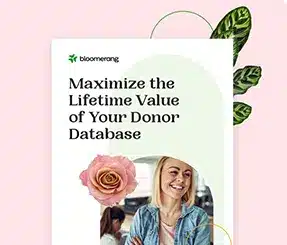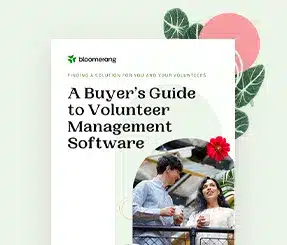[ASK AN EXPERT] Is A Welcome Email Series Necessary? If So, What Are Best Practices?


Full Platform Overview Chat With Us



Full Platform Overview Chat With Us




Our Ask An Expert series features real questions answered by Claire Axelrad, J.D., CFRE, also known as Charity Clairity. Today’s question comes from a nonprofit employee who wants advice on whether an email welcome series is necessary, and how to set one up:
Is a welcome email series necessary? We always send a thank you, but couldn’t an automated series of emails annoy new donors? I would think they wouldn’t want to hear from us too frequently, especially right after they made a gift. What’s the best way to welcome folks in, without being perceived as a nuisance?
— Worried about Being a Pest
I have two words for you:
First. Impressions.
You only have one chance at this, and the initial impression you make will likely make or break your relationship with a new donor.
This is just human nature. Think about your personal life. If someone makes a bad first impression on you, what chance is there you’ll make an effort to get further connected to them? You’ll chalk it up to an experience not to be repeated. You may forget about them entirely.
A series of welcome emails can help you start off on the right foot with donors.
When a new supporter enters your nonprofit’s community, your plan should be to make sure you welcome them right away — before they lose the good feeling they had when they made the gift. When people give, they get a shot of dopamine known as the warm glow effect. Alas, this feeling doesn’t last long. Unless you reinforce it.
Ongoing gratitude is important to build and nurture relationships with all your donors, but especially with first-timers.
Why? The latest Fundraising Effectiveness Project showed new donor retention to be at an all-time low of 13.8%. Often new donors are testing you. When you send merely an automated, formal thank you, a receipt, or something generic that may not even reference the project to which they gave, they’re going to feel you failed the test. Donors are thinking:
Develop an email series showing donors both the power of their involvement, and how much you admire them (and want to get to know them better), right from the start.
This is full court press time. I subscribe to the “3 Ps” for thanking any contributor, promptly, personally, and in a manner powerfully indicative of the positive impact their contribution will have. When welcoming new donors, you want to step up the tempo by condensing the emails you might send to ongoing supporters over say a six-month period into a three to six-week period. Think of it as wooing a new date after the initial connection. If you do it right, each time they’ll feel more and more excited about their newfound affiliation with you.
A welcome series is an automated, drip campaign with a sequence of generally 3 – 5 messages or more. They introduce folks to your work, share stories of accomplishments, offer opportunities for engagement and ooze with gratitude.
ADDED BENEFIT: A series of emails gives you the opportunity to make, and keep, promises. For example, in email #1 you can let them know you’ll be back in a week with a list of volunteer activities. In email #2, after fulfilling on week #1’s promise, you can say next week you’ll be back with a story that will break their heart, but restore their hope. The more you deliver, the more you establish trust — the foundation of all successful relationships.
Beginning to foster donor relationships when supporters first join your community will help you fight the continued challenges with retention nonprofits are facing. Showing you care, and offering further opportunities to feel good, is the opposite of being a pest!
— Charity Clairity (Please use a pseudonym if you prefer to be anonymous when you submit your own question, like “Worried About Being a Pest” did.)
Does your organization do an email welcome series? Let us know in the comments.
Comments